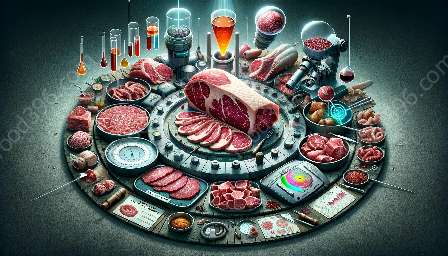Meat aging and tenderization play a crucial role in determining the quality of meat. These processes profoundly influence the texture, flavor, and overall eating experience of meat. Understanding the science behind meat aging and tenderization is essential for ensuring the production of high-quality meat products. In this topic cluster, we'll explore the evaluation methods for meat aging and tenderization and examine how these processes contribute to meat quality.
Meat Quality Evaluation
Meat quality evaluation involves assessing various attributes of meat, such as tenderness, juiciness, flavor, and overall palatability. Several factors contribute to meat quality, including the aging and tenderization processes that meat undergoes. By understanding and evaluating these processes, meat producers and researchers can optimize the quality of meat products, meeting consumer demands and enhancing overall satisfaction.
The Science behind Meat Aging
Meat aging is a natural process that involves the breakdown of the muscle fibers and connective tissues in meat. This process can occur through two main methods: wet aging and dry aging. Wet aging involves vacuum-sealing meat cuts and allowing them to age in refrigerated conditions, while dry aging typically involves hanging meat in a controlled, open-air environment. Both methods result in enzymatic and biochemical changes within the meat, leading to improved tenderness and flavor.
Evaluating Meat Aging
To assess the effectiveness of meat aging, various evaluation methods are utilized. This includes measuring changes in pH, water-holding capacity, color, and texture. Additionally, sensory evaluation by trained panels or consumers is often conducted to gauge the impact of aging on overall meat quality. By understanding the physiological and chemical changes that occur during aging and employing appropriate evaluation techniques, meat producers can ensure that the aging process enhances the quality of their products.
The Role of Tenderization in Meat Quality
Tenderization is a critical aspect of meat processing, especially for tougher cuts of meat. It involves physical or enzymatic methods to break down the tough connective tissues, resulting in a more tender texture. Enzymatic tenderization, such as through the use of proteolytic enzymes or natural aging, helps to soften the meat, improving its palatability.
Evaluating Meat Tenderization
Assessing the tenderization of meat involves measuring parameters such as shear force, collagen content, and changes in protein structure. Additionally, sensory evaluation is crucial to gauging the tenderness and overall eating experience of the meat. By incorporating these evaluation methods, meat producers can optimize tenderization processes to achieve desired levels of tenderness and enhance meat quality.
Conclusion
The evaluation of meat aging and tenderization processes is integral to ensuring high-quality meat products. By understanding the science behind these processes and employing effective evaluation techniques, meat producers can optimize the tenderness, flavor, and overall quality of their products. Furthermore, continued research and innovation in the field of meat science can lead to further advancements in meat aging and tenderization, ultimately enhancing the eating experience for consumers.

